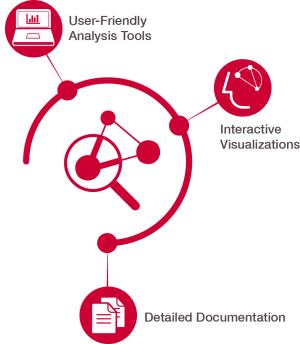|
The GDC provides an array of interactive, web-based Analysis Tools for performing in-depth gene- and variant- level analyses. The workflow is cohort-centric, meaning analyses are specific to a researcher's cohort of interest.
|
Documentation
Data Analysis Tools
The GDC provides interactive, cohort-centric tools for analyzing genomic and clinical data.
Data Analysis Policy
Policies and guidelines for appropriate use of data, are provided by the GDC whether open- or controlled- access.
Data Harmonization and Generation
The GDC developers best-in-practice pipelines for processing the most common molecular platforms. Variant calling, gene expression analysis, and other pipelines are implemented using software and algorithms selected in consultation with experts in the genomics community.
What’s New with GDC and Cancer Research
Cancer Research Highlights and Publications:
On the GDC Project summary page or Mutation Frequency > Gene tab, why are the # of Mutations sometimes less than the # Affected Cases?
The “# Mutations” column in the Project or Mutation Frequency > Gene tab displays the number of distinct (unique) mutations within the affected cases and not necessarily the total number of all mutations within the project or query filter.
Need help with data retrieval, download, or submission?

